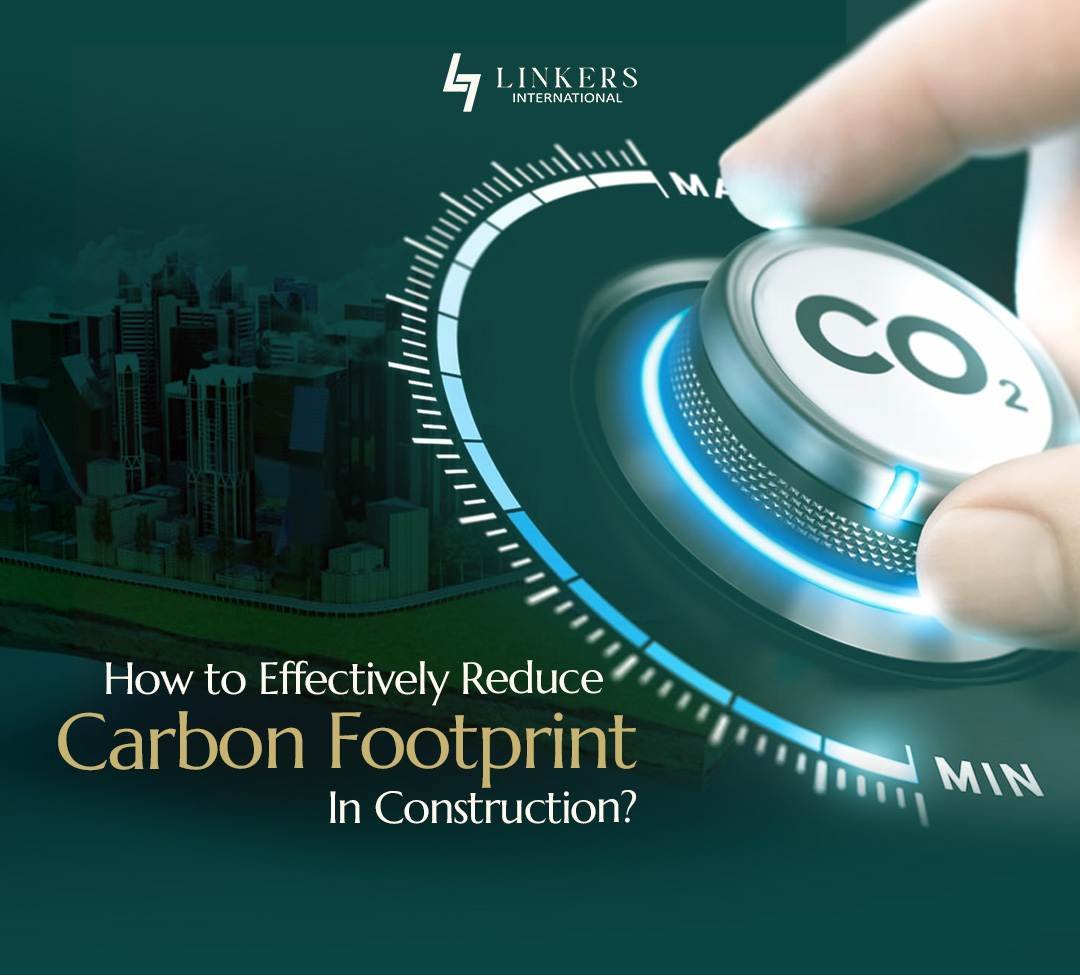It’s striking to learn that the construction industry is responsible for approximately 37% of global carbon emissions, and remains one of the most carbon-intensive sectors globally. This significant contribution underscores the urgent need for the sector to adopt sustainable practices and innovative solutions to reduce its environmental impact, particularly in real estate development.
What are the Innovative Solutions to Cut Carbon Footprint in Construction?
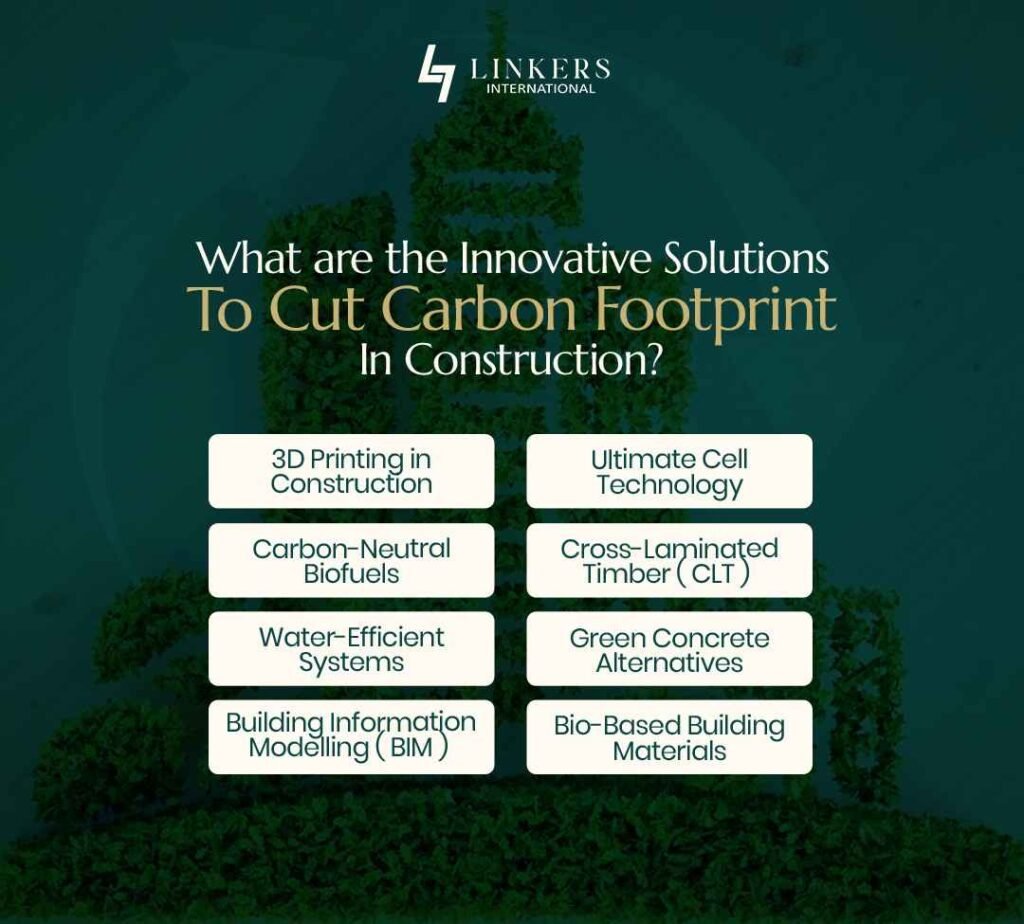
The future of construction lies in low-carbon design, renewable technologies, and a more circular, efficient approach to building. Here are some of the most promising innovations that are helping reduce carbon emissions in construction worldwide:
1. 3D Printing in Construction
3D printing enables precise, material-efficient construction, cutting down waste and reducing the need for energy-intensive materials like traditional concrete.
2. Building Information Modelling (BIM)
BIM technology improves planning, reduces errors, and minimizes material waste through intelligent digital simulations of building projects.
3. Cross-Laminated Timber (CLT)
A strong and sustainable alternative to concrete and steel, CLT is carbon-moving, renewable, and ideal for multi-story buildings.
4. Carbon-Neutral Biofuels
Replacing diesel in construction machinery with bio-based fuels, made from corn, sugarcane, animal fat, and organic waste, can drastically reduce on-site emissions.
5. Water-Efficient Systems
Low-flow plumbing, rainwater harvesting, and greywater reuse help cut water usage and associated energy costs.
6. Green Concrete Alternatives
Using fly ash or slag in concrete mixes reduces cement use, which is one of the largest single contributors to construction emissions.
7. Ultimate Cell Technology
This innovation improves combustion efficiency in heavy machinery and transport vehicles, cutting fuel use and emissions. This involves integrating Hydrogen into the combustion process, thus reducing carbon emissions and improving engine efficiency.
8. Bio-Based Building Materials
Bio-based materials offer strong, natural, low-carbon alternatives to traditional building components. Examples include: mycelium instead of plastic and foam, hempcrete instead of concrete, and straw panels instead of Gypsum board.
Can Concrete Be Replaced in the Future?
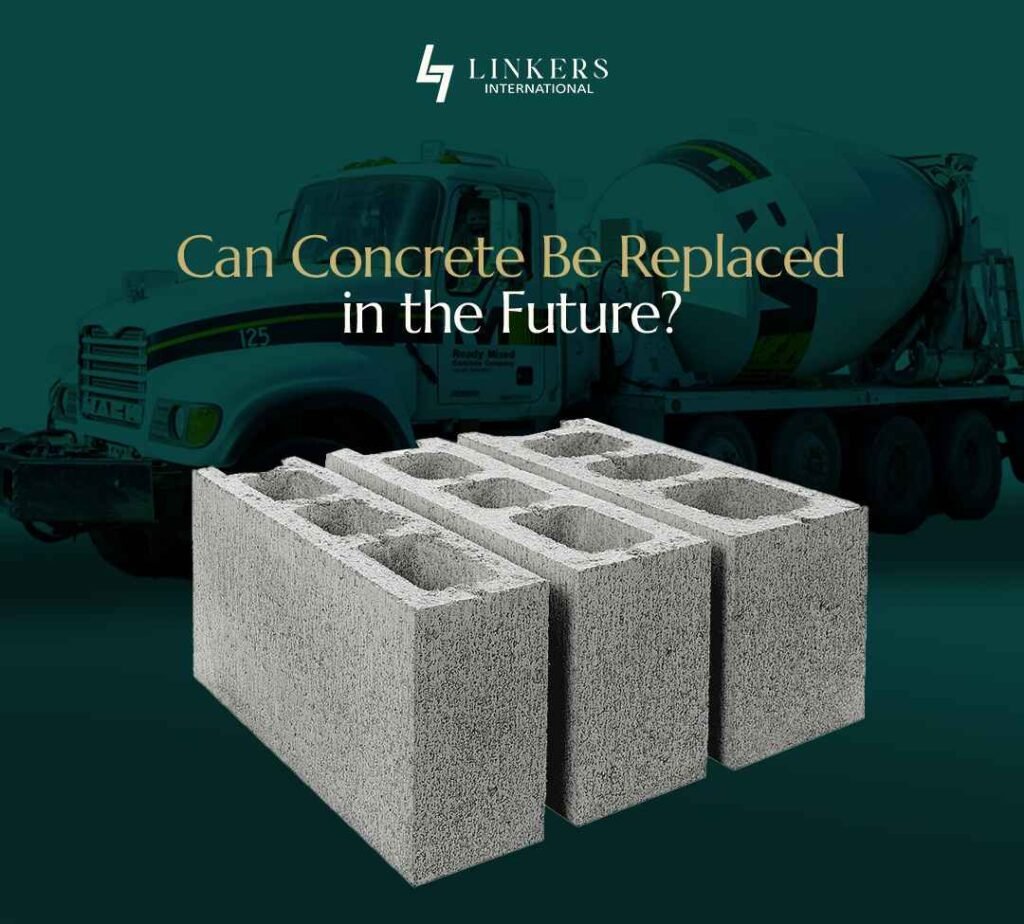
Concrete is the backbone of modern construction, but it’s also one of the biggest contributors to global carbon emissions, responsible for up to 8% worldwide. As climate concerns intensify, the industry is exploring innovative, low-carbon alternatives that could eventually reduce or even replace traditional concrete in many applications.
Materials like hempcrete, mycelium, and fly ash concrete are already showing promise. While a complete shift away from concrete may not happen overnight, hybrid systems and smarter mix designs can drastically reduce its carbon impact, paving the way for more sustainable, resilient buildings.
Does Steel Have Greener Alternatives for the Future of Construction?
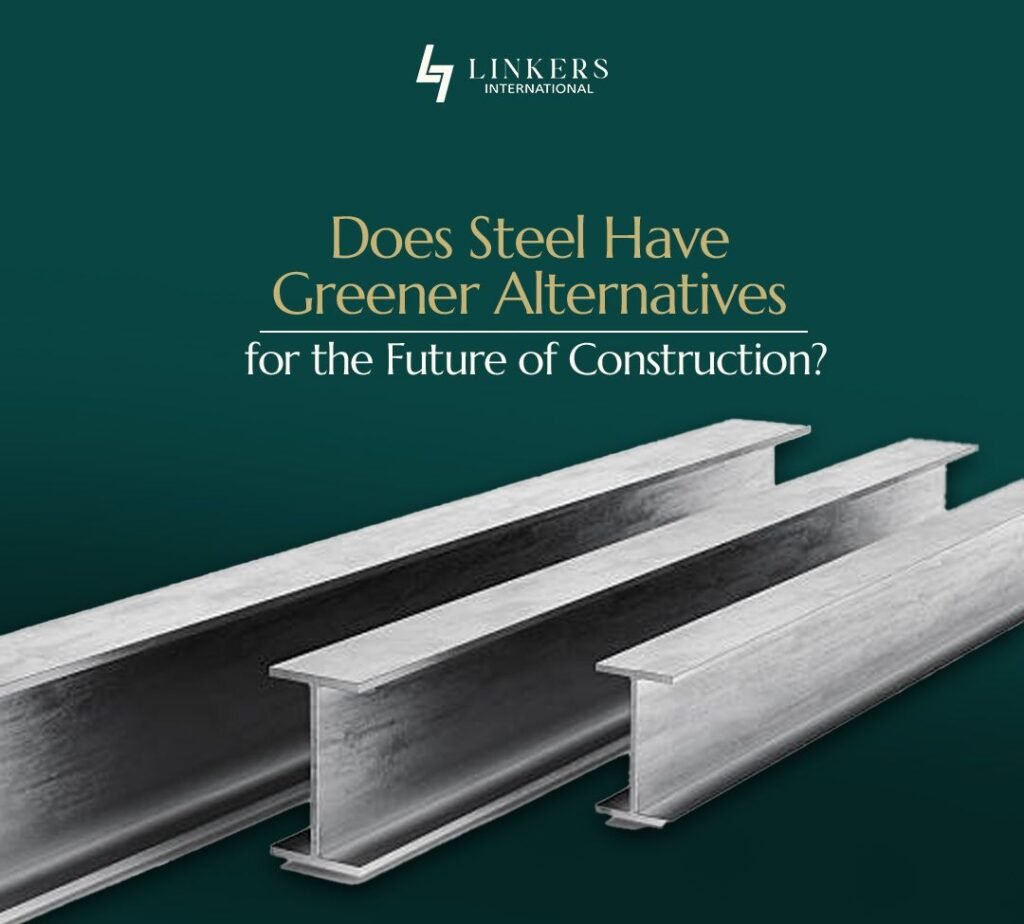
Steel has long been a symbol of strength and durability in construction, but it comes at a high environmental cost, contributing significantly to global CO₂ emissions. As the world pushes for decarbonization, the question arises: Can we build strong without steel?
Emerging materials like cross-laminated timber (CLT), bamboo composites, and high-performance bio-based materials are offering viable structural alternatives for low- to mid-rise buildings. In parallel, innovations like green steel, produced using hydrogen instead of coal, are helping reduce carbon footprint without sacrificing performance. While steel may not disappear entirely, its role is set to evolve in a future where sustainability is as critical as strength.
3 Economic Advantages of Carbon Reduction
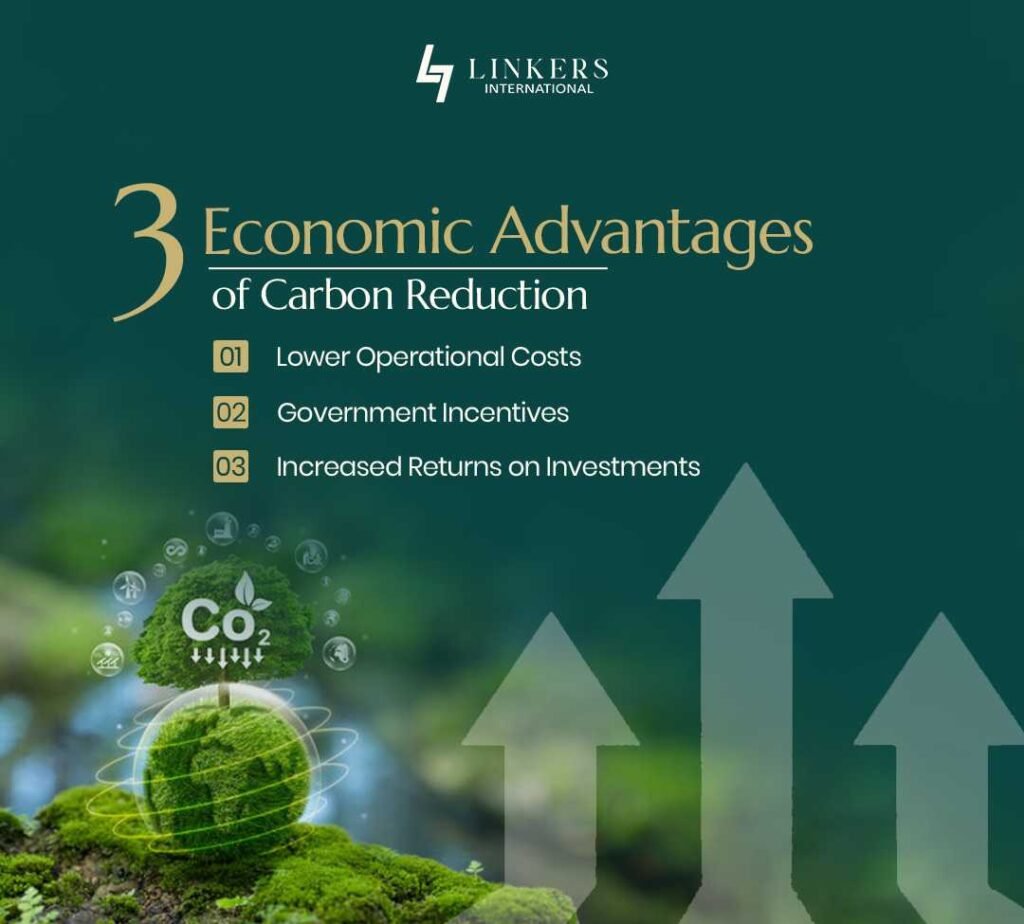
Reducing carbon footprint in construction isn’t just good for the planet; it’s smart for businesses because sustainable practices lead to lower operating costs, higher asset value, and long-term savings. Here are three key economic benefits of cutting your carbon footprint.
Lower Operational Costs: Energy-efficient buildings consume less power for heating, cooling, and lighting, leading to long-term savings.
Government Incentives: Green buildings may qualify for tax incentives, faster approvals, and certifications (such as LEED), enhancing their market value.
Increased ROI: Sustainable real estate attracts eco-conscious tenants and investors, providing higher occupancy rates and rental yields.
Pakistan’s Context: Where Are We Now?
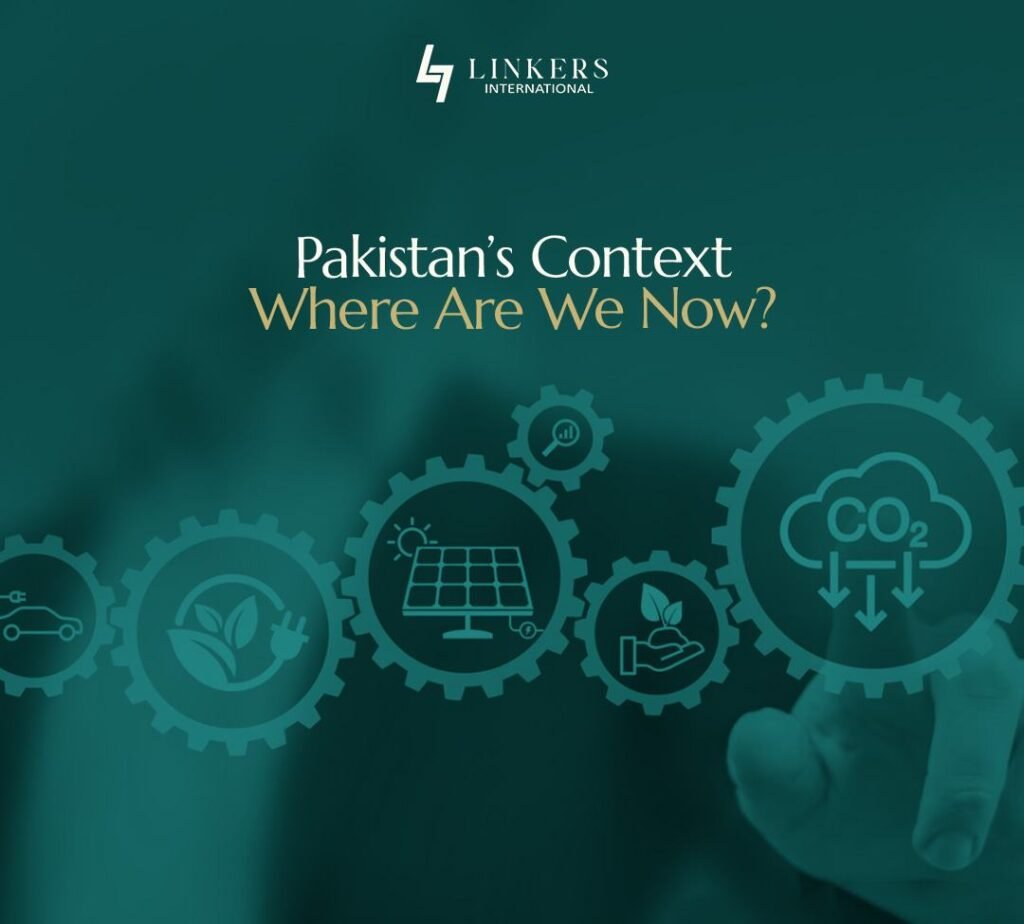
Pakistan faces a unique set of challenges in its journey toward sustainable construction as the sector remains largely carbon-intensive. The widespread reliance on coal-fired brick kilns, with over 20,000 kilns emitting lethal levels of carbon, makes the carbon footprint even more alarming.
Understanding the ground realities is crucial for driving meaningful, low-carbon transformation. However, despite growing awareness, Pakistan still faces significant roadblocks in building sustainably:
Overdependence on Non-Renewables: Many projects still rely on coal, diesel, and traditional bricks, ignoring cleaner alternatives due to cost or lack of awareness.
Unplanned Urbanization: Rapid growth has led to poorly designed cities, with limited green spaces and energy-inefficient buildings.
Outdated Construction Practices: From energy-hungry kilns to high-waste methods, the local industry is in urgent need of modernization.
How to Shift to Low-Carbon Construction in Pakistan?
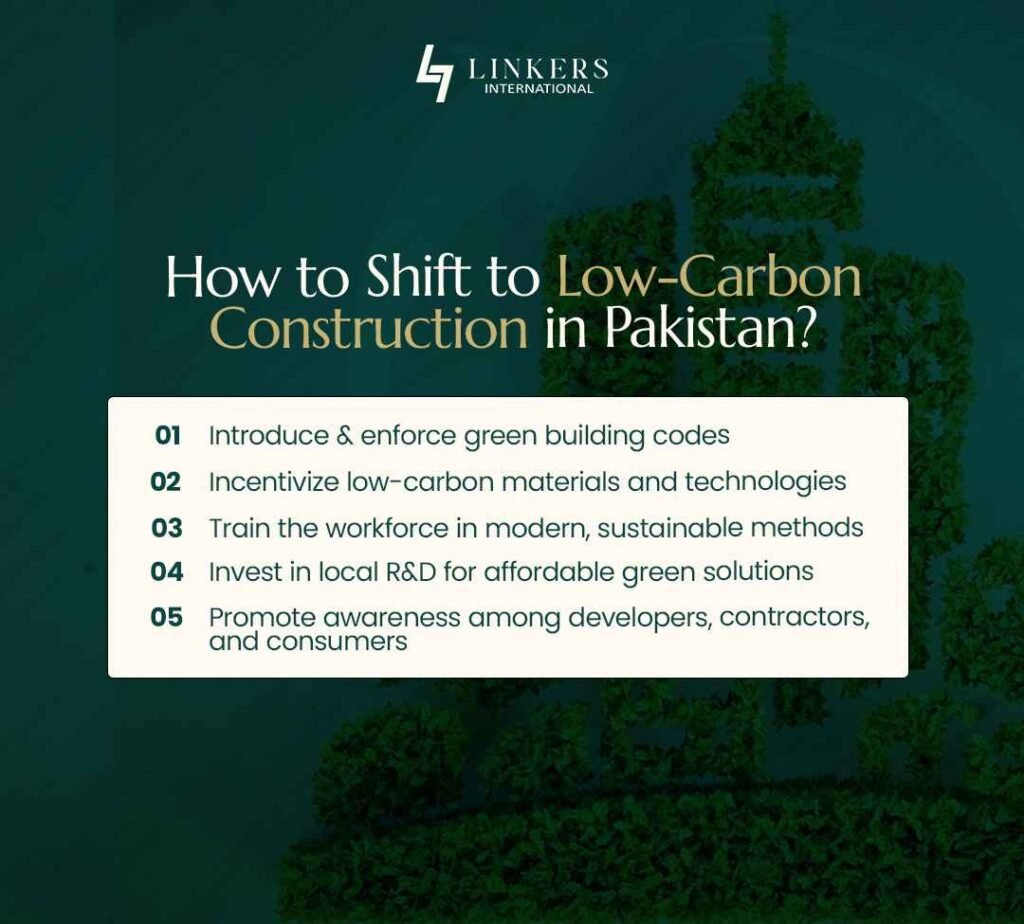
Transitioning to low-carbon construction in Pakistan requires more than just new materials; it demands a complete shift in mindset, policy, and practice. A multi-pronged approach is essential to drive sustainable change. Here’s how Pakistan can pave the way toward a greener, more resilient construction industry.
- Introduce & enforce green building codes
- Incentivize low-carbon materials and technologies
- Train the workforce in modern, sustainable methods
- Invest in local R&D for affordable green solutions
- Promote awareness among developers, contractors, and consumers
Linkers International Builds Sustainable Developments
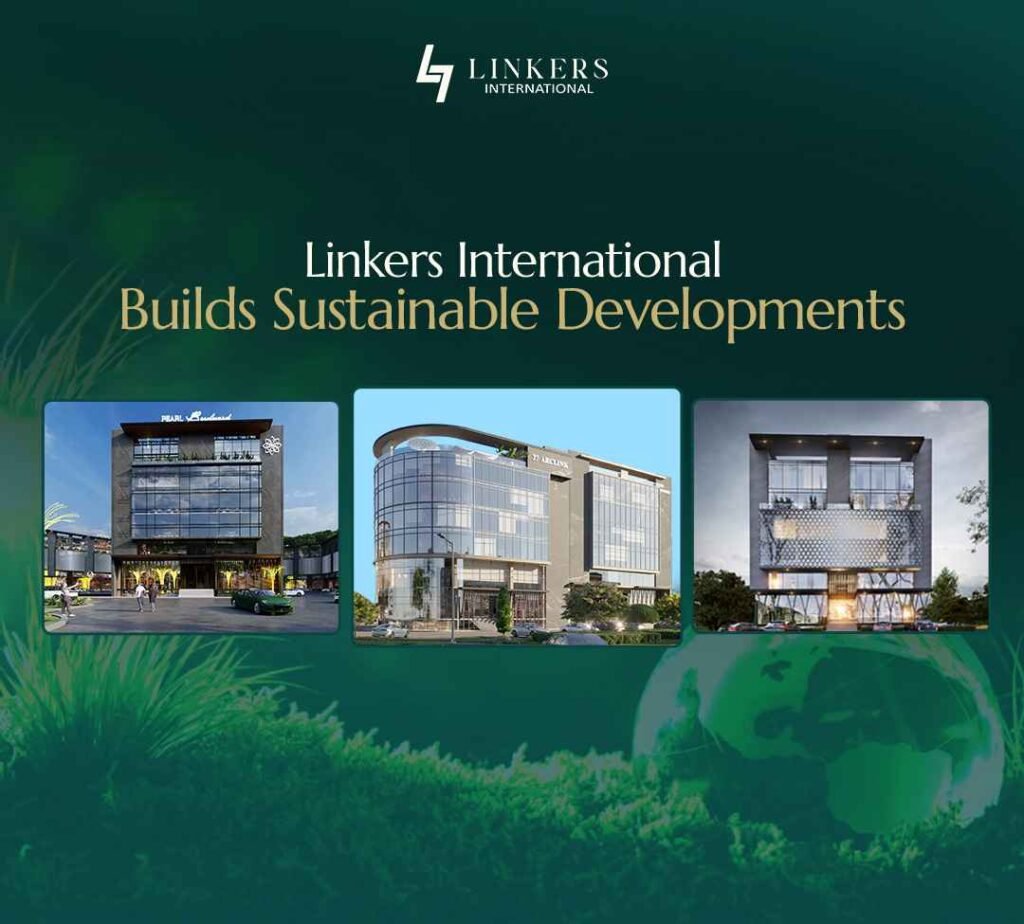
Linkers International focuses on sustainable development that starts long before construction begins. The company’s under-construction projects in DHA 1 Islamabad, exhibit a mindful approach towards reducing carbon footprint. It starts with smart architectural design of every project that seamlessly integrates environmental responsibility with modern functionality.
By rethinking how to design buildings, we significantly cut down on carbon emissions and energy use. Here’s how:
Optimized Structural Layouts: We design efficient building shapes and orientations in every project, including 27 Arclink and Pearl Boulevard, that minimize material use and enhance natural energy performance, reducing waste and lowering operational costs from day one.
Glass Facades for Natural Light: Our projects, such as Pearl Business Center, feature high-performance glazing and strategically placed glass facades that maximize daylight, significantly reducing the need for artificial lighting and conserving energy.
Natural Ventilation: Linkers’ projects are thoughtfully planned with smart window placement, open corridors, and cross-ventilation systems, cutting down reliance on mechanical cooling and enhancing indoor air quality.
Solar Orientation & Shading: We position our buildings to make the most of the sun’s path, using solar orientation strategies to maintain comfort throughout the year with minimal energy use, thus minimizing carbon footprint.
Flexible, Adaptive Spaces: Our architectural layouts are future-proof, designed to be easily modified or repurposed over time. This adaptability reduces the need for costly demolitions or reconstructions.
Building a Carbon-Free Future!
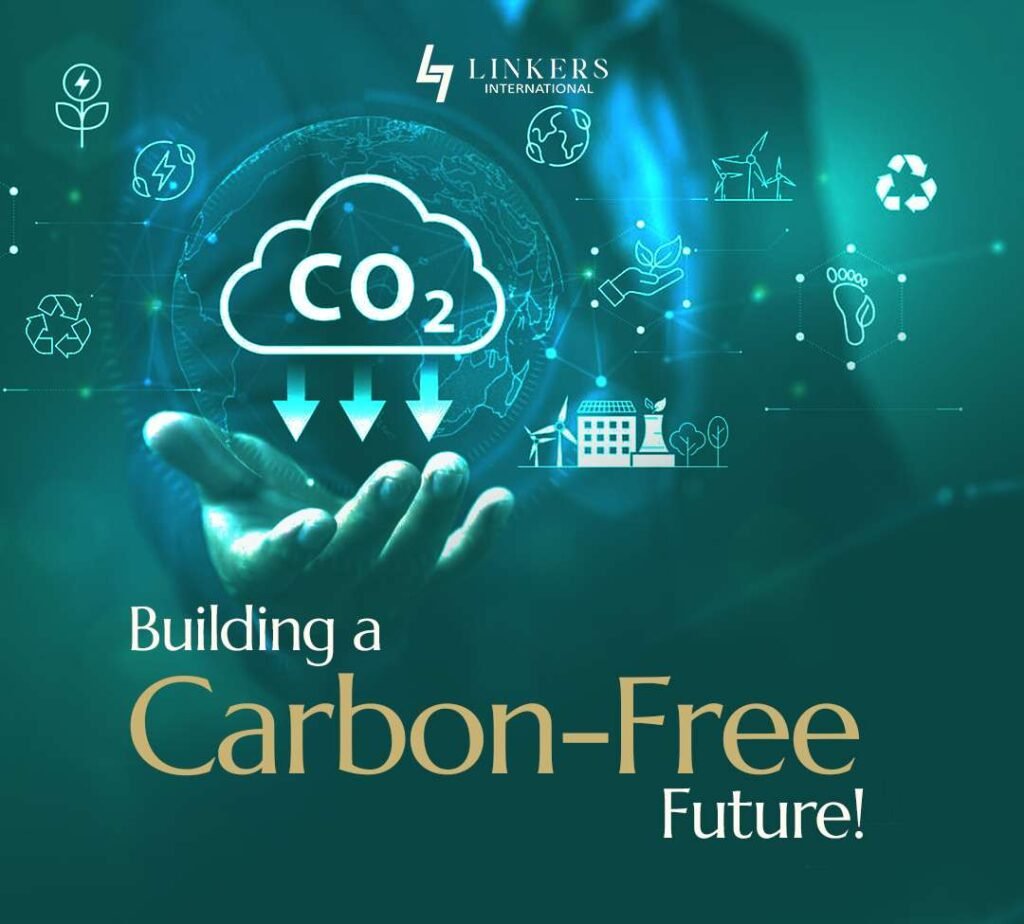
Reducing carbon footprint in construction is a necessity for climate resilience, economic stability, and long-term sustainability. For Pakistan, embracing innovative materials, clean energy, and smarter planning can not only reduce emissions but also create jobs, lower costs, and improve living standards.
As the sector evolves, those who adapt first will lead the way in building the green, efficient, and inclusive cities of tomorrow.


